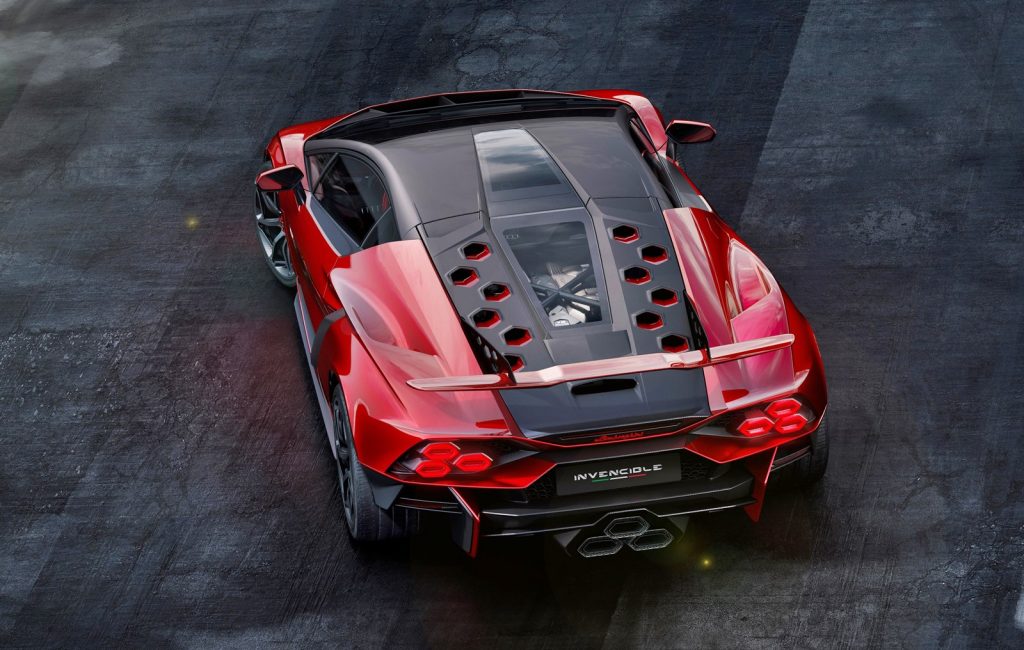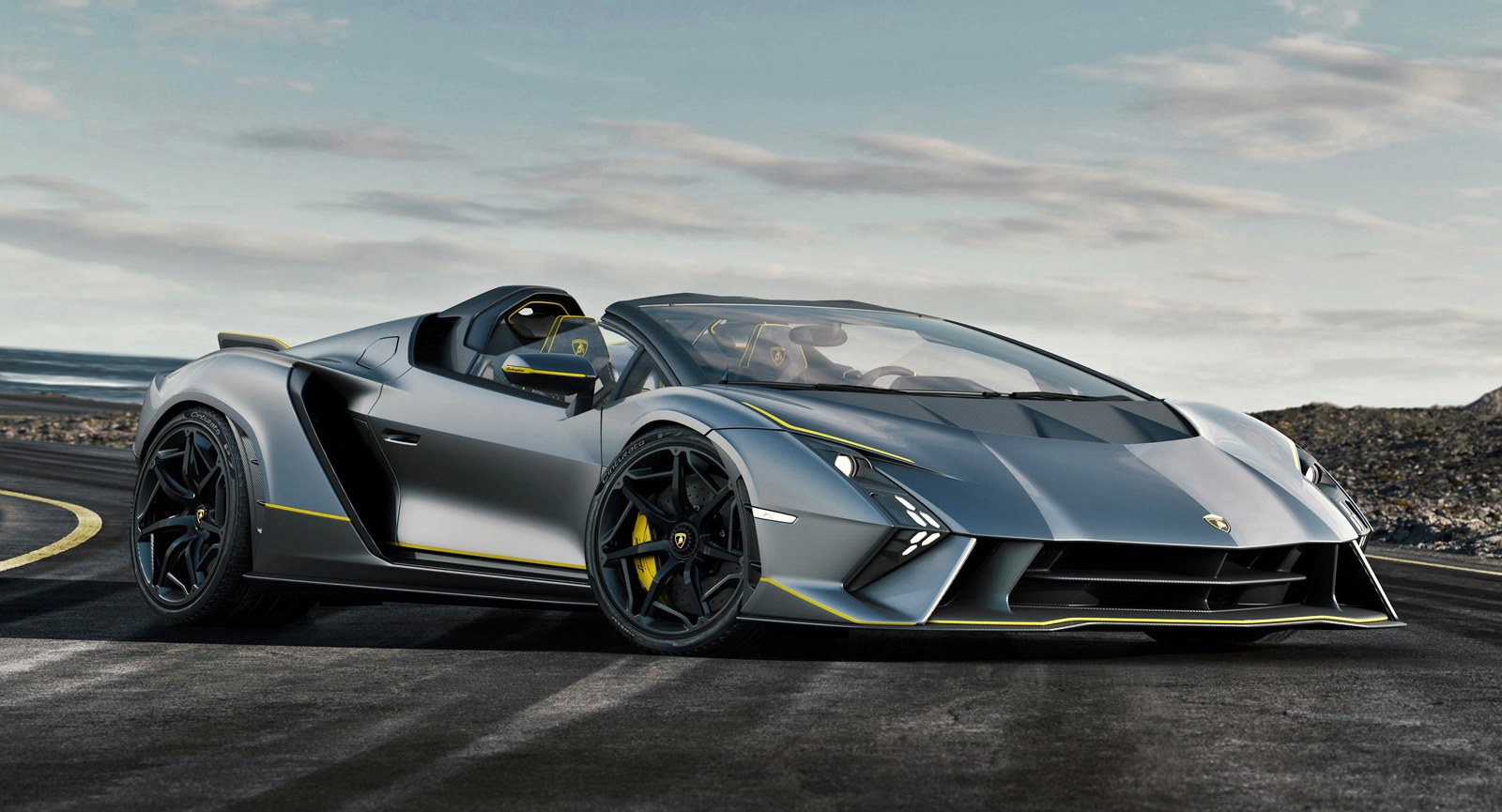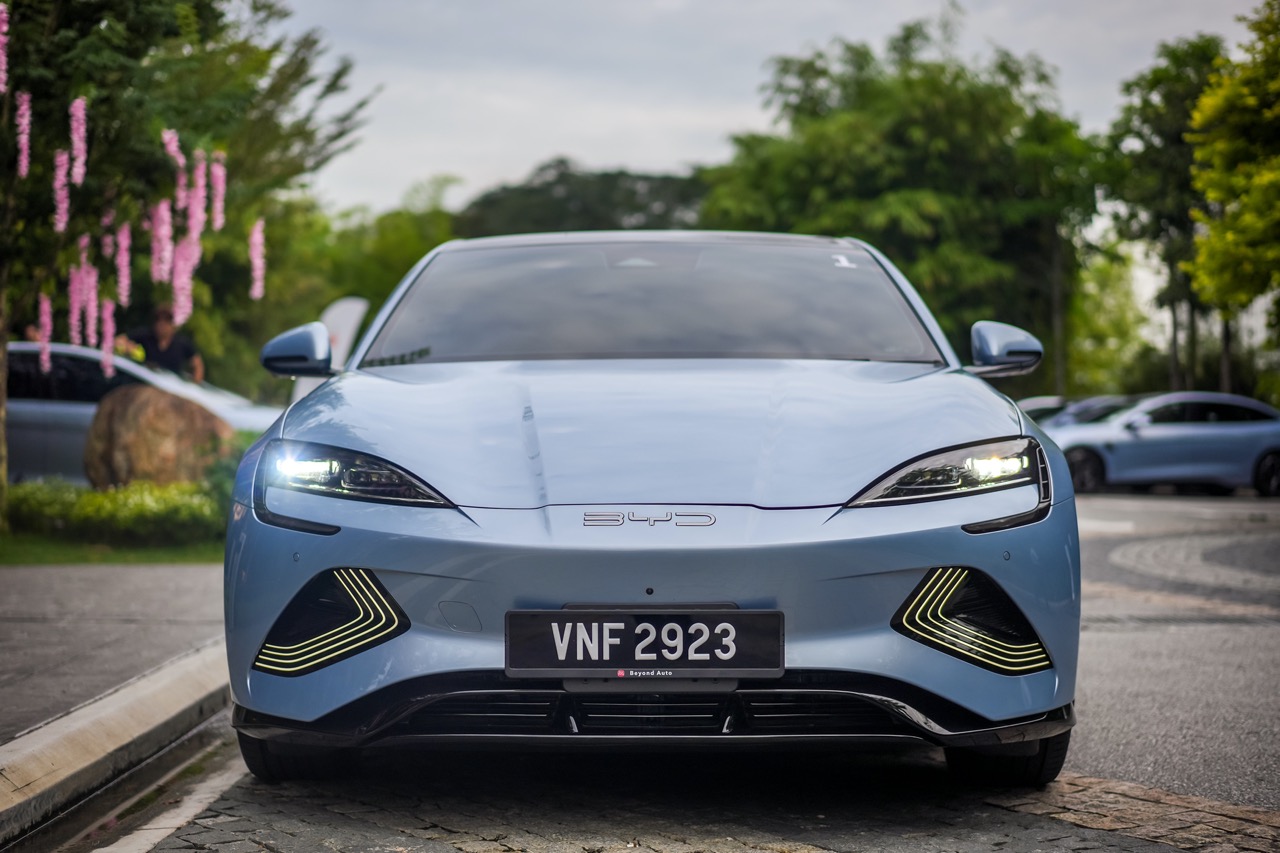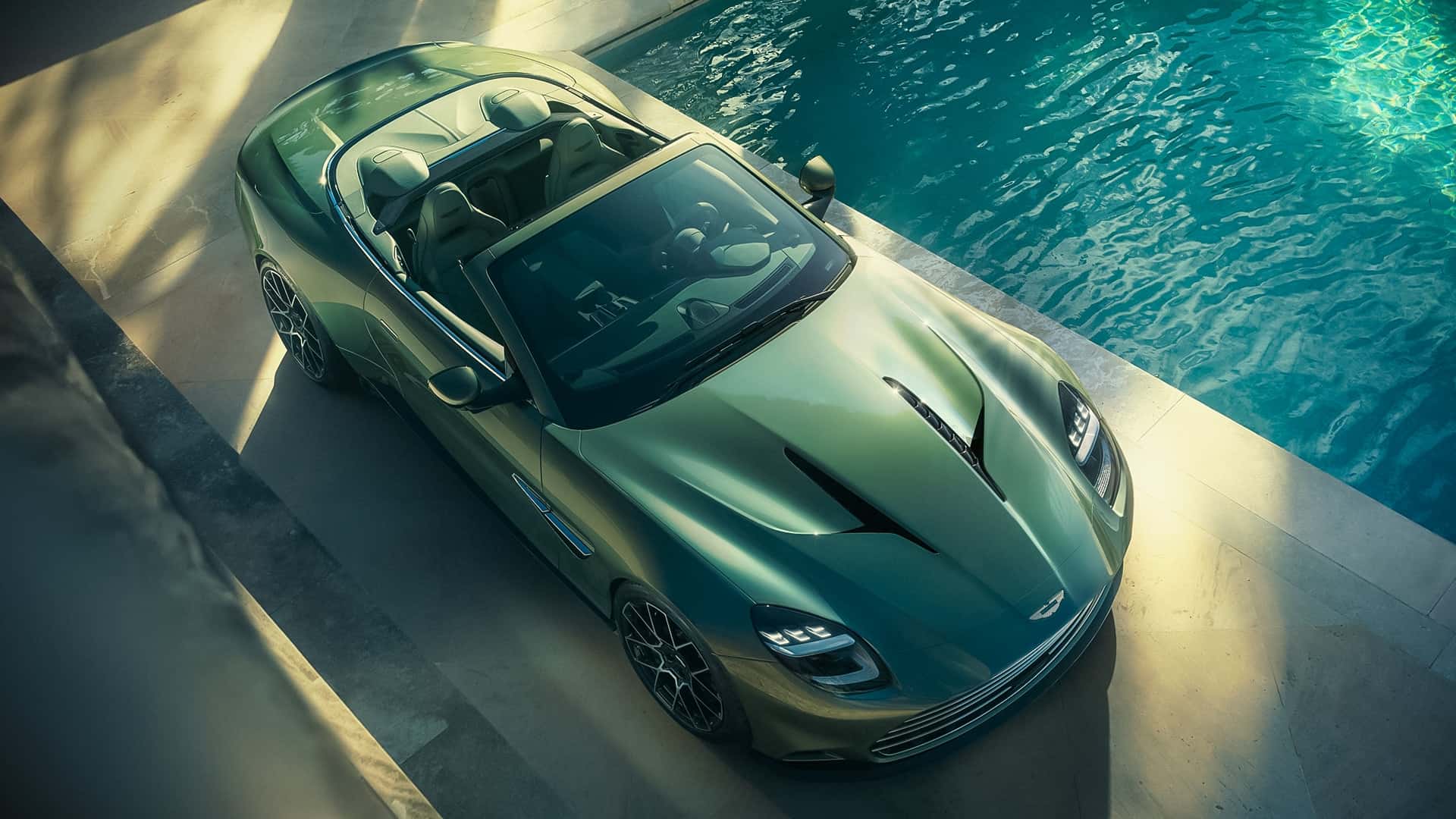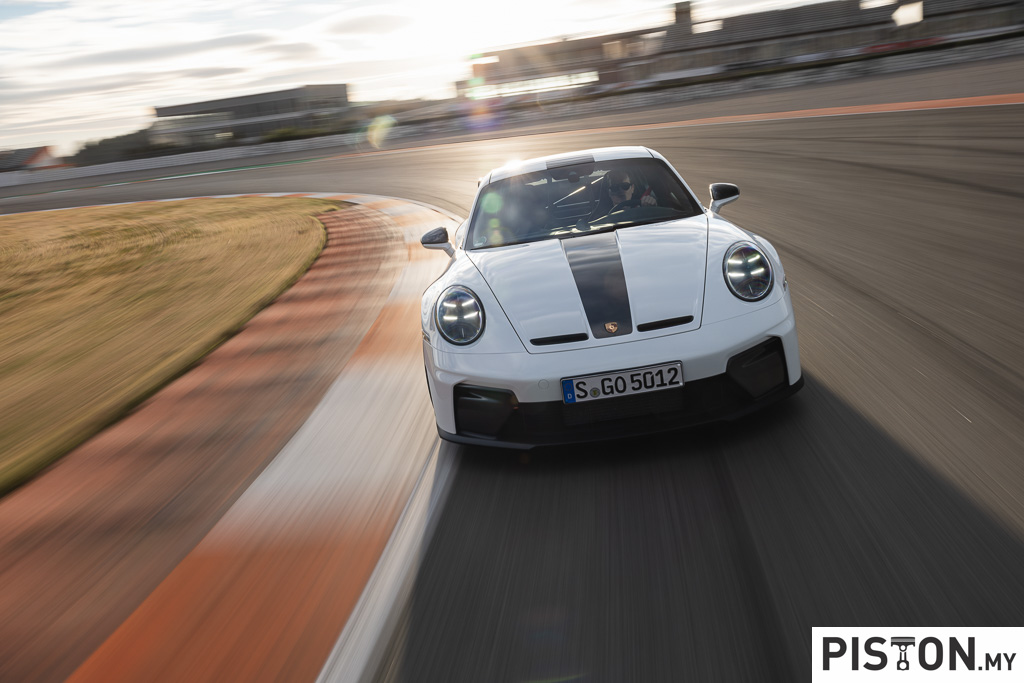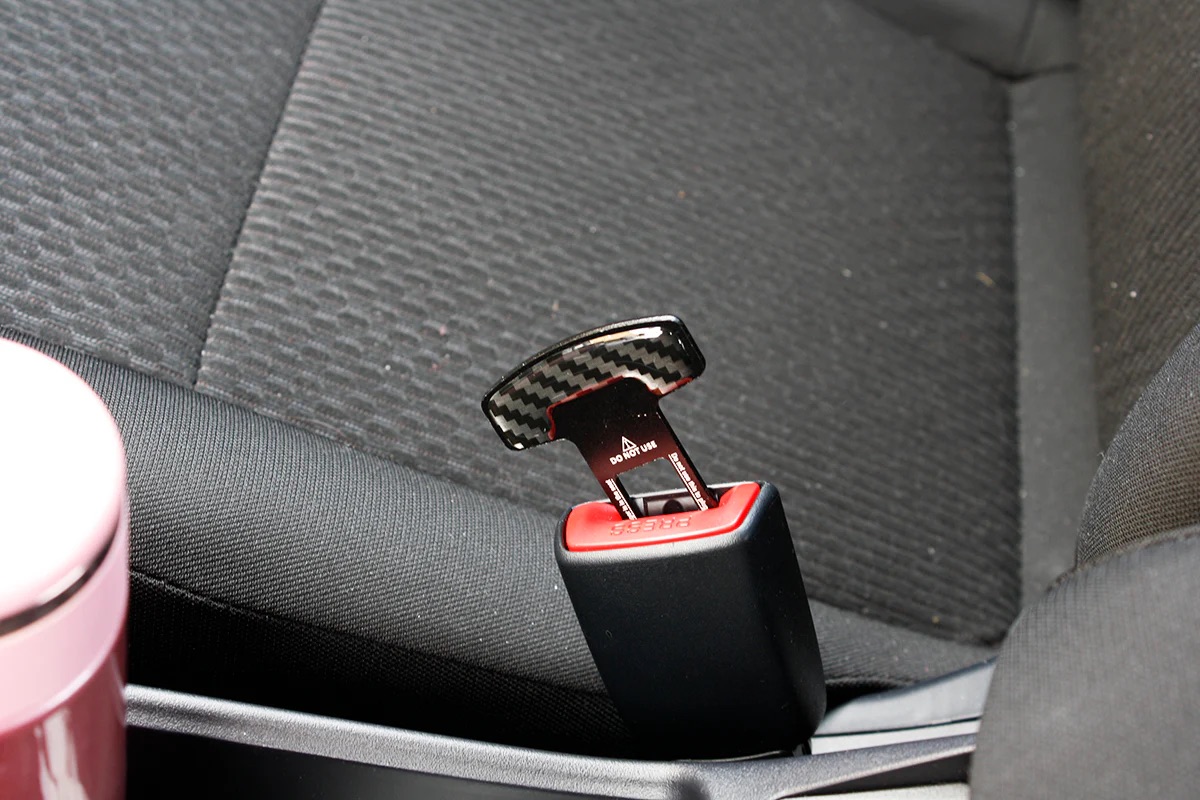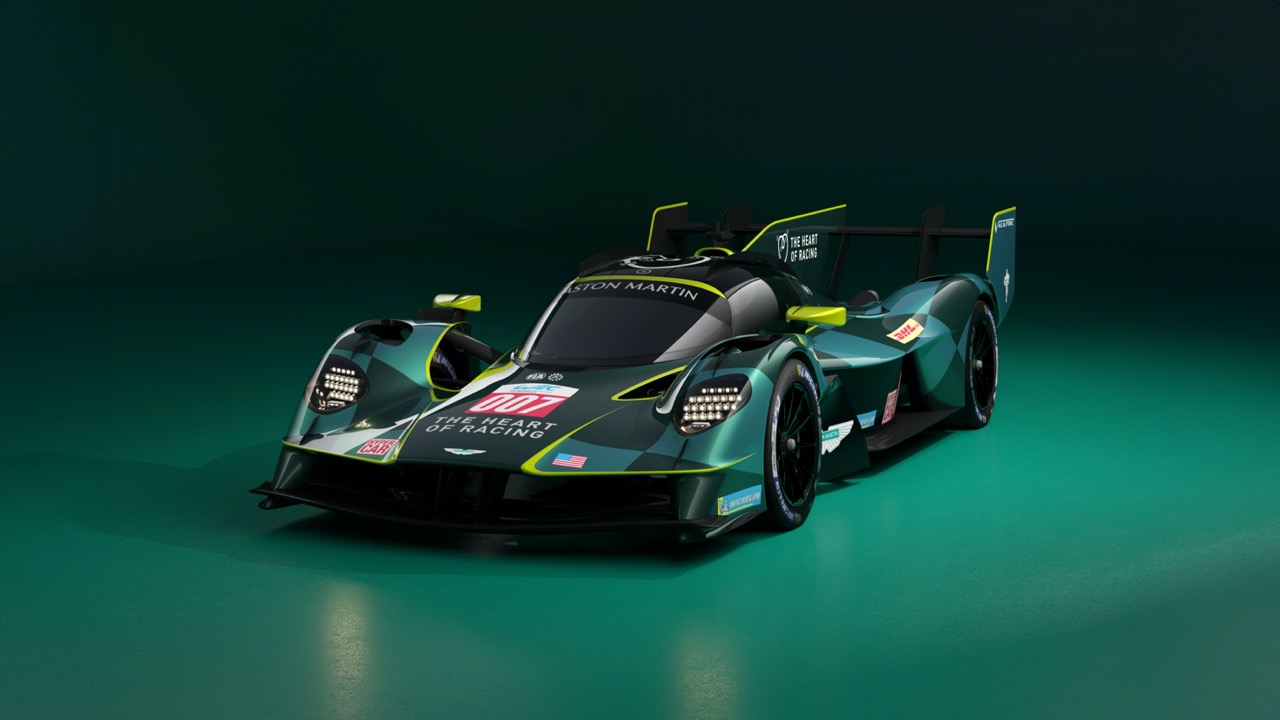With just a few weeks to go before Lamborghini’s first hybrid super sportscar makes its debut, the carmaker is saying farewell to its renowned naturally-aspirated V12 engine. With a history going back to the very first Lamborghini car, the V12 engine is very much a part of the brand’s DNA and success.
“The V12 engine is one of the pillars of our history and our marque’s success,” said Stephan Winkelmann, Automobili Lamborghini Chairman & CEO. “As we head towards embracing a new era of hybridization at the heart of our Cor Tauri strategy, this is the Lamborghini way of celebrating the naturally aspirated V12 with two one-off vehicles that perfectly represent our concept of excellence in personalization.”

The one-off models are called the Invencible and Autentica, the former a coupe and the latter a roadster. Created by Lamborghini Centro Stile, they have design cues that have contributed to the company’s iconic significance, as well as drawing on a sporting character inspired by the racetrack.
Both cars pay tribute to masterpieces of Lamborghini design – the Sesto Elemento, Reventon and Veneno. They share the same carbonfibre monocoque from the Aventador, along with full carbonfibre bodywork that incorporates design and technologies successfully tested by Lamborghini in motorsport.
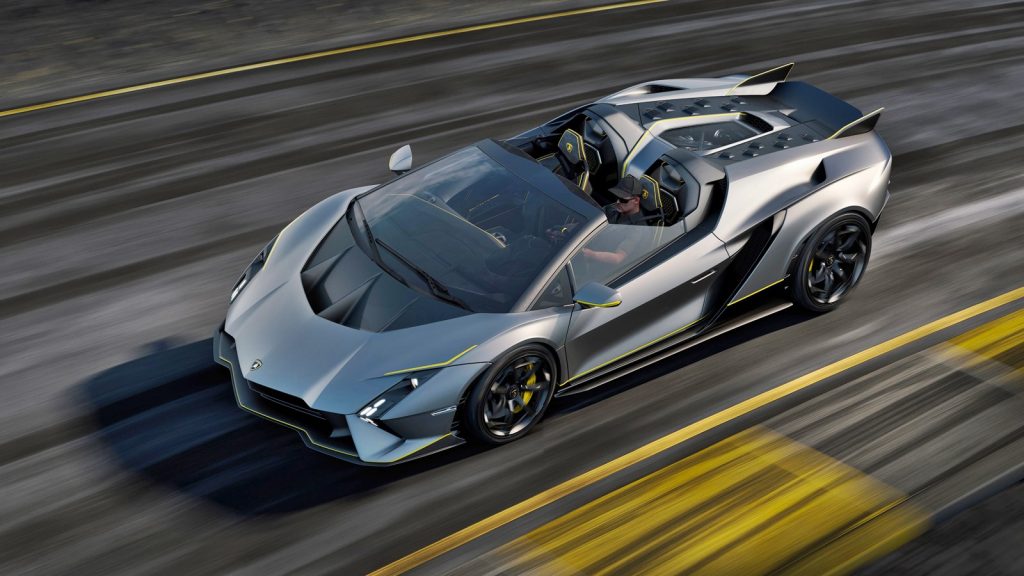
The imposing bonnet reprises that of the Essenza SCV12, along with the pronounced front splitter complete with vertical struts designed to manage airflow in the most efficient way. The hexagon, a well-known motif of modern Lamborghini design, is integrated harmoniously yet conspicuously into the distinctive visual elements of the car, starting with the striking front and rear light assembly highlighted by innovative hexagonal LED running lights.
On the bonnet, the air intakes are reminiscent of those on the Sesto Elemento. The same cues are repeated in the central triple exhaust with tips made of Inconel, a special high-performance steel alloy derived from the aerospace industry.
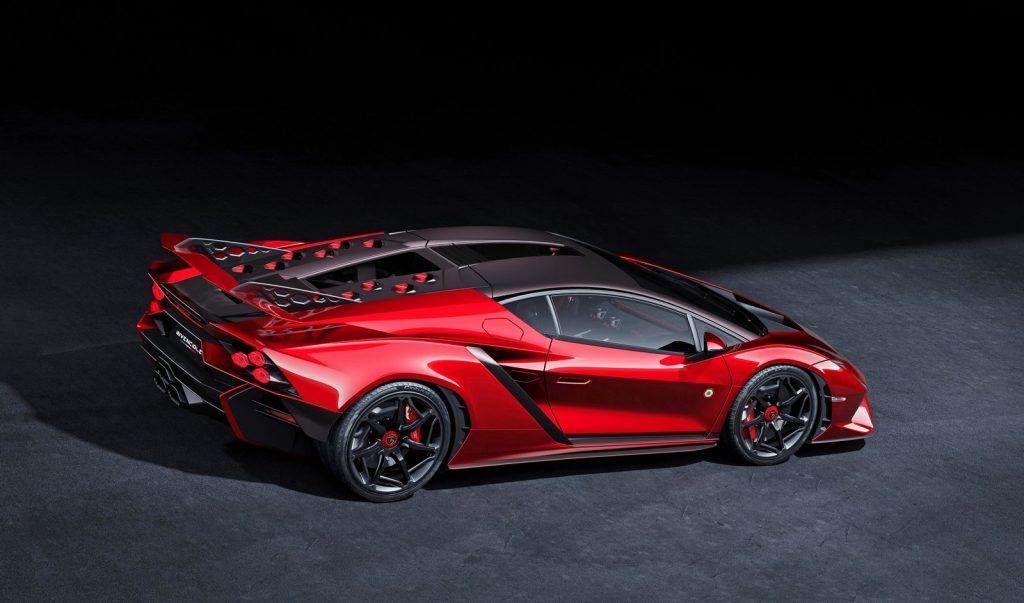
The Invencible (above) is characterised by the subtle contrast between the dominant shade of red and the carbon-look elements enhanced by red ‘flakes’. The Rosso Efesto bodywork is complemented by sills and doorframes in carbonfibre, just like the brake calipers in Rosso Mars, which sit behind single-nut wheels with carbonfibre fairings to ventilate the brake assembly.

The Autentica (above), on the other hand, features bodywork in Grigio Titans with details in Matt Black and a Giallo Auge livery: a colour repeated on the brake calipers as well as the main aerodynamic elements. These include the front splitter, and motorsport-derived rear wing that optimises the aerodynamic load, flanked by a pair of fins. The car’s profile is rendered unique by two domes with integrated rollbars, inspired by open-topped racers of the past.

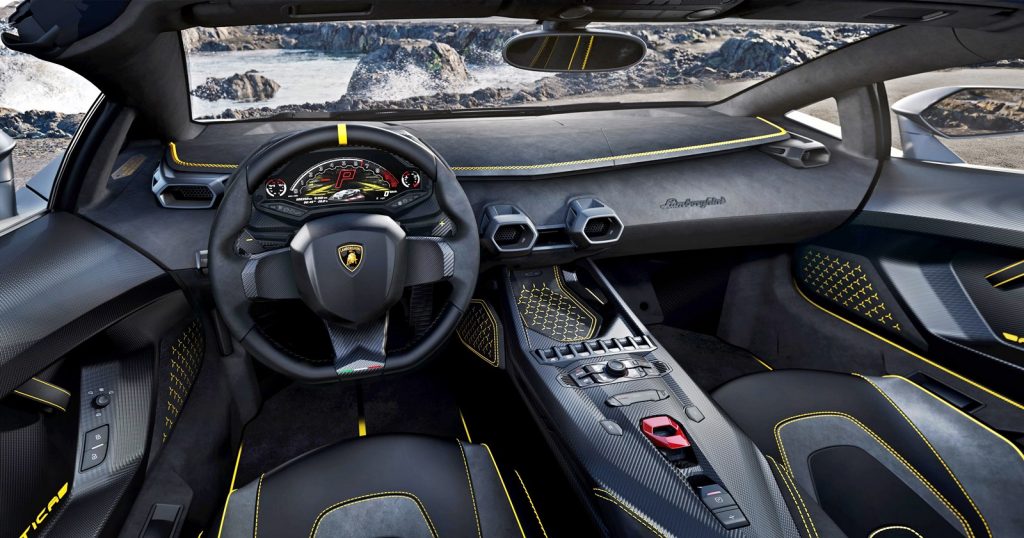
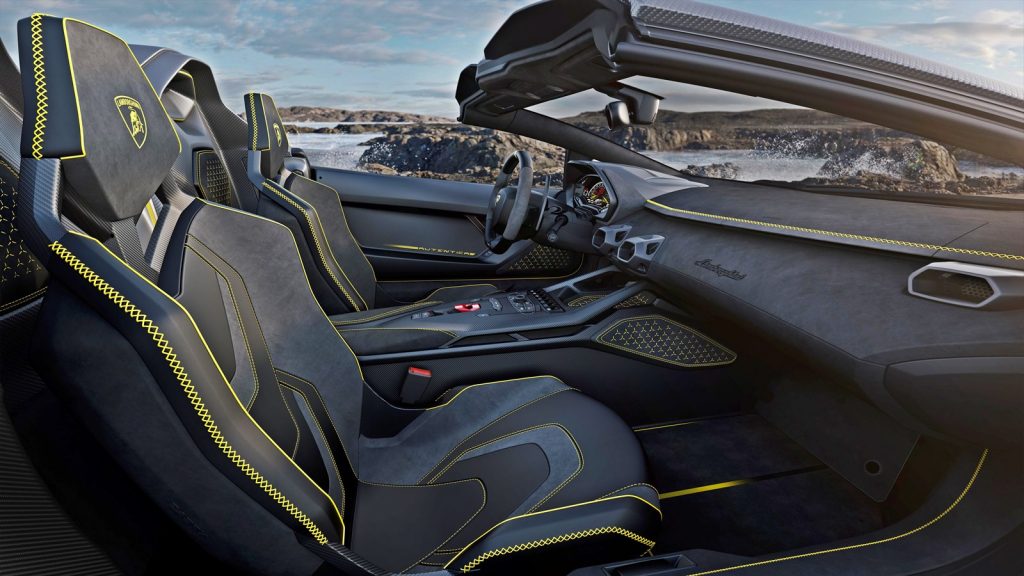
The interiors of both cars are dominated by clean lines, with a minimalist dashboard enhanced by hexagonal 3D-printed air vents. The absence of instrumentation on the console gives the cabin ‘lightness’, allowing the driver to focus on driving enjoyment. The cockpit itself is framed in carbonfibre, with a digital display featuring dedicated graphics for each car.
These are the very last cars to be produced by Lamborghini equipped with a 12-cylinder 6.5-litre engine mounted longitudinally in the rear. In its final form, the engine produces 780 ps/720 Nm which flows to all four wheels through a 7-speed ISR gearbox.
